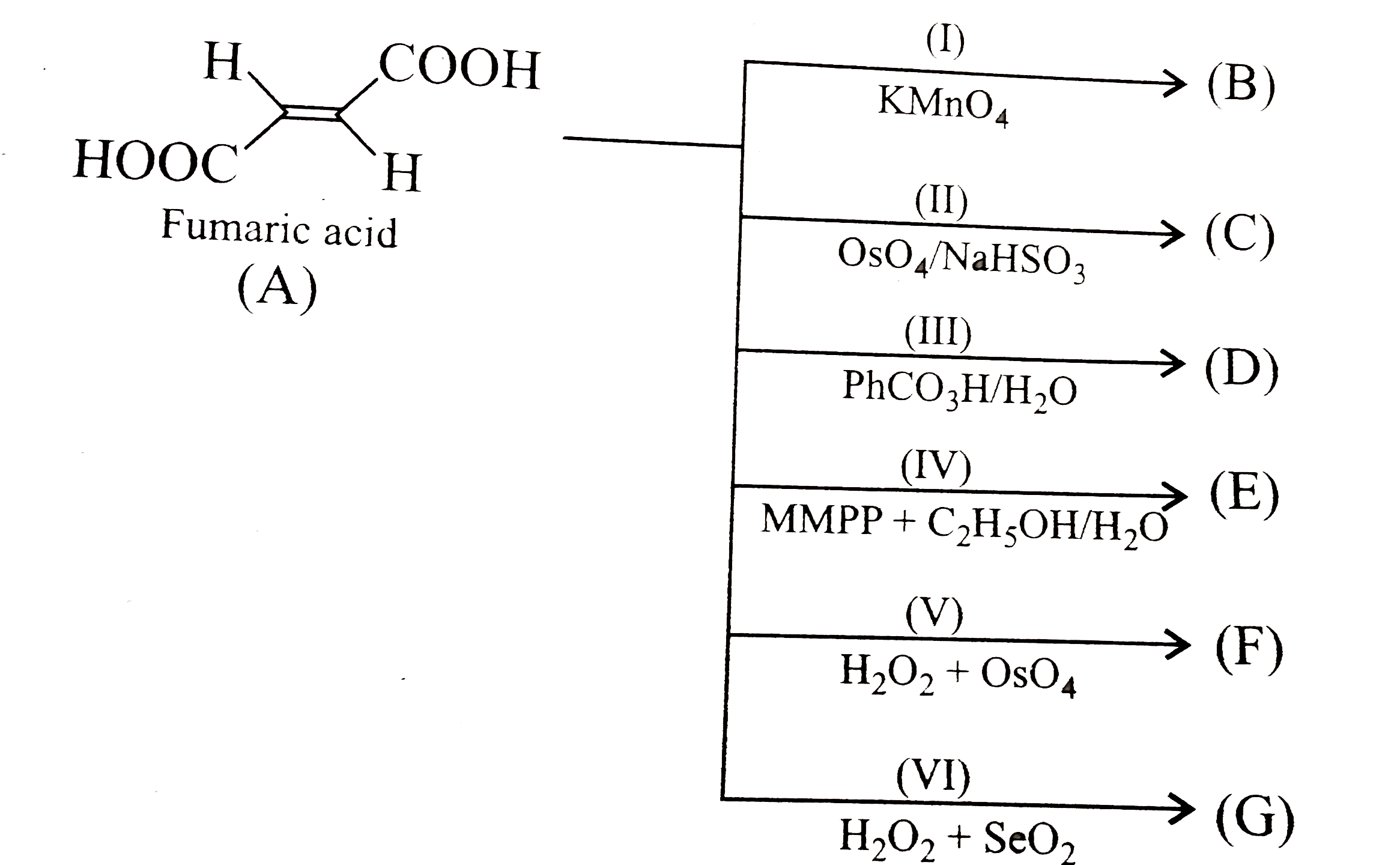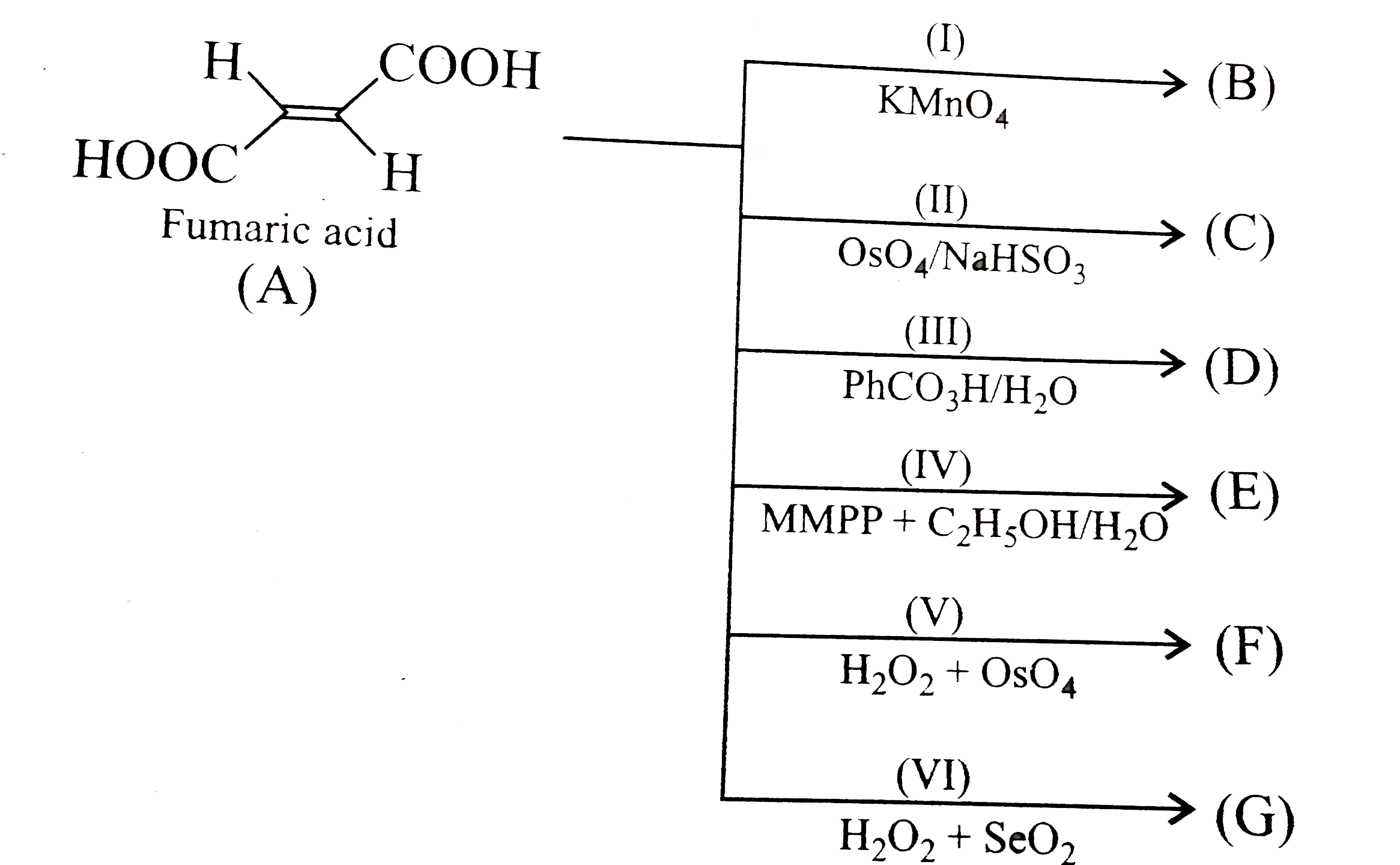Why is meso-tartaric acid regarded achiral in nature ?
Step-by-Step Solution:
1. Definition of Tartaric Acid:
- Tartaric acid is an organic compound with the IUPAC name 2,3-dihydroxybutane-1,4-dioic acid. It contains two hydroxyl groups (-OH) and two carboxylic acid groups (-COOH).
2. Understanding Chirality:
- A chiral center (or stereocenter) is a carbon atom that is bonded to four different groups. A compound is considered chiral if it can rotate plane-polarized light and its mirror image is not superimposable on itself.
3. Identifying Chiral Centers in Meso-Tartaric Acid:
- Meso-tartaric acid has two chiral centers. Each chiral center has four different substituents attached, which typically would make the compound chiral.
4. Definition of Meso Compounds:
- Meso compounds are those that contain chiral centers but are not optically active due to the presence of an internal plane of symmetry. This means that the compound can be divided into two identical halves.
5. Presence of a Plane of Symmetry:
- In the structure of meso-tartaric acid, there exists a plane of symmetry. This plane divides the molecule into two mirror-image halves, making the two halves identical.
6. Conclusion on Chirality:
- Because meso-tartaric acid has a plane of symmetry, its mirror images are superimposable. Therefore, despite having chiral centers, meso-tartaric acid is considered achiral (not chiral) and is classified as a meso compound.
Final Statement:
Meso-tartaric acid is regarded as achiral in nature because it possesses a plane of symmetry that renders its mirror images superimposable, despite having chiral centers.
---
- Tartaric acid is an organic compound with the IUPAC name 2,3-dihydroxybutane-1,4-dioic acid. It contains two hydroxyl groups (-OH) and two carboxylic acid groups (-COOH).
- A chiral center (or stereocenter) is a carbon atom that is bonded to four different groups. A compound is considered chiral if it can rotate plane-polarized light and its mirror image is not superimposable on itself.
- Meso-tartaric acid has two chiral centers. Each chiral center has four different substituents attached, which typically would make the compound chiral.
- Meso compounds are those that contain chiral centers but are not optically active due to the presence of an internal plane of symmetry. This means that the compound can be divided into two identical halves.
- In the structure of meso-tartaric acid, there exists a plane of symmetry. This plane divides the molecule into two mirror-image halves, making the two halves identical.
- Because meso-tartaric acid has a plane of symmetry, its mirror images are superimposable. Therefore, despite having chiral centers, meso-tartaric acid is considered achiral (not chiral) and is classified as a meso compound.
Meso-tartaric acid is regarded as achiral in nature because it possesses a plane of symmetry that renders its mirror images superimposable, despite having chiral centers.
Topper's Solved these Questions
- BOOK - ICSECHAPTER - ORGANIC CHEMISTRY : SOME BASIC PRINCIPLES AND TECHNIQUES EXERCISE - ESSAY ( LONG ANSWER ) TYPE QUESTIONS42videos
ORGANIC CHEMISTRY : SOME BASIC PRINCIPLES AND TECHNIQUES
- BOOK - ICSECHAPTER - ORGANIC CHEMISTRY : SOME BASIC PRINCIPLES AND TECHNIQUES EXERCISE - OBJECTIVE ( MULTIPLE CHOICE ) TYPE QUESTIONS142videos
ORGANIC CHEMISTRY : SOME BASIC PRINCIPLES AND TECHNIQUES
- BOOK - ICSECHAPTER - ORGANIC CHEMISTRY : SOME BASIC PRINCIPLES AND TECHNIQUES EXERCISE - VERY SHORT ANSWER TYPE QUESTIONS87videos
ORGANIC CHEMISTRY : SOME BASIC PRINCIPLES AND TECHNIQUES
- BOOK - ICSECHAPTER - HYDROGENEXERCISE - NCERT TEXT-BOOK EXERCISE (With Hints and Solutions)53videos
HYDROGEN
- BOOK - ICSECHAPTER - REDOX REACTIONS (OXIDATION AND REDUCTION)EXERCISE - NCERT TEXT-BOOK. EXERCISES ((With Hints and Solutions)69videos
REDOX REACTIONS (OXIDATION AND REDUCTION)
Similar Questions

Meso-tartaric acid is formed in :View SolutionOrder of acidic nature
 View Solution
View SolutionMeso-tartaric acid and d-tartaric acid are
View SolutionWhy is phosphoric acid syrupy?
View Solution
(±) -Tartaric acid is formed in :View SolutionTartaric acid [HO2CH(OH)CH(OH)CO2H] was an important compound in history of stereochemistry.
Two naturally occuring forms of tartaric acid are optically inactive. One optically inactive form (P) has a melting point of 210-212∘C and can be separated into two optically acitve forms, whereas other optically inactive form (Q) cannot be resolved further.
Optically inactive form Q isView SolutionWhy is acetic acid more acidic than ethanol?
View SolutionWhy is boric acid considered as a weak acid ?
View SolutionWhy line spectra is regarded as the fingerprints of atoms ?
View SolutionWhy line spectra is regarded as the fingerprints of atoms ?
View Solution

